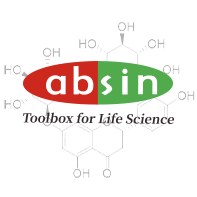| Usage |
Self-brought consumables:
24 well plate, adjustable pipette gun and tip
Centrifuge
Fluorescence microscope or flow cytometry
Deionized water, PBS
Reagent Preparation:
Cell Tracker Green:Operate on ice, protect from light and store in separate packages to avoid repeated freezing and thawing.
1 × Assay Buffer:Dilute 5 × Assay Buffer to 1 × Assay Buffer with deionized water. Heat to 37 °C before use.
Staining Solution:Prior to the start of the experiment, the Cell Tracker Green was diluted 1: 1000 to 1 × Assay Buffer and the dose was expanded accordingly for large sample size determination. Protect from light and preheat to 37 °C before use.
attention:For different cell types and/Or experimental conditions, which should be determined empiricallyCell Tracker GreenThe final concentration of. Typically, long-term staining (more than about3Days) or using rapidly dividing cells would require a 1: 1000 dilution to double the dye concentration. For shorter experiments (e.g. viability assays), it may be necessary to use concentrations as low as 1:5000Diluted dye. In order to maintain a normal cellular physiological state and reduce potential artifacts, the concentration of the dye should be kept as low as possible.
Experimental procedure:
A. Flow cytometry quantification
1. Treat the cells with the required method and establish a parallel control group;
Note: Parallel control suggestions: unstained cells (i.e. cells without Cell Tracker Green), suspended with 1 × Assay Buffer;
2. For non-adherent cells, 0.5-1x10 were collected by centrifugation (4 °C, 300 g, 5 min)6Cells. Wash twice with pre-cooled PBS and discard the PBS. For adherent cells, cells were first digested with trypsin (without EDTA) and then centrifuged;
3. Resuspending the cell pellet in 500 uL Staining Solution;
4. Incubate cells at 37 °C for 15-30 min under dark conditions:
5. Isolate the cells at 500 g and discard the supernatant;
6. Resuspend the pellet in fresh preheated medium, incubate the cells for another 30 min to ensure complete contact with the probe, and wash the cells with PBS again;
7. At 5x105To 1x106Density of cells/ml Cell pellets were weighted in preheated PBS and cells were immediately analyzed by flow cytometry using an FL1 channel (typically FL1).
B. Fluorescence microscope detection
1. Make a fine sound on the stem: Perform flow cytometry according to steps A.1 to A.7, and place the cell burst of A.7 on slide 1. The cells were beautified with a glass coverslip. Cells were analyzed as soon as possible by fluorescence microscopy using an appropriate filter. If the cells are to be fixed and permeabilized, proceed to step B.3.
2. For adherent cells: the recommended protocol is as follows
(1) Cells were directly cultured with 24-well culture blood. CO at 37 °C before staining2Cultivate in an incubator for at least 24 h;
(2) treating the cells with a desired method;
(3) washing the cells twice with PBS and discarding the PBS;
(4) 0.5 mL of Staining Solution was added to white blood cells and incubated at 37 ° C. for 15-30 min in the dark;
(5) Discard the supernatant, replace it with preheated fresh growth medium, and then incubate at 37 ° C. for another 30 min in the dark;
(6) Cells were washed twice with PBS or an appropriate buffer. If the cells are to be fixed and permeabilized, proceed to step B.3;
(7) Use a suitable filter for observation.
3. Fixation and permeabilization
(1) Fixation with an aldehyde-containing fixative. Usually we used 4% paraformaldehyde (abs9179) to fix cells at room temperature for 15 min;
(2) After fixation, the cells were washed with PBS three times;
(3) After fixation, if the cells are to be detected with antibodies later, they should be incubated in ice-cold acetone for 10 minutes to make the cells permeable. After permeation, the cells should be washed 3 times with PBS.
|
| Description |
The study of cell movement and localization requires the use of specific probes that are non-toxic to living cells. Live Cell Tracking Kit provides a versatile and well-preserved cell tracking reagent (Cell Tracker Green) for monitoring cell movement, location, proliferation, migration, chemotaxis, and invasiveness. Cell Tracker Green is a live cell fluorescent tracer probe that can enter cells through passive diffusion and covalently bind to intracellular proteins. It is a long-acting cell tracer dye. Once in the cell, the non-fluorescent Cell Tracker Green will be hydrolyzed by endolesterase to produce green fluorescence (Ex/Em = 494/521 nm). These fluorescent products can only accumulate in cells with intact cell membranes, so dead cells and intact cell membranes cannot be stained. Cell Tracker Green is not sensitive to pH changes and can be fixed by formaldehyde or glutaraldehyde. The Cell Tracker Green probe can be retained in living cells for several generations and can show fluorescence for at least one week. The probe can be transferred to daughter cells, but not to adjacent cells in the population.
Product Components:
| Name |
Specifications |
Storage conditions |
| Cell Tracker Green |
250uL |
-20 ℃, protected from light |
| Assay Buffer (5 ×) |
10mL |
4℃ |
Product Features:
Used to monitor cell motility, localization, proliferation, migration, chemotaxis and invasion.
The CellTracker Green probe can be well retained in living cells for several generations and can show fluorescence for at least one week. The probe is transferred to daughter cells, but not to neighboring cells in the population.
Optimized for flow cytometry or fluorescence microscopy. |


